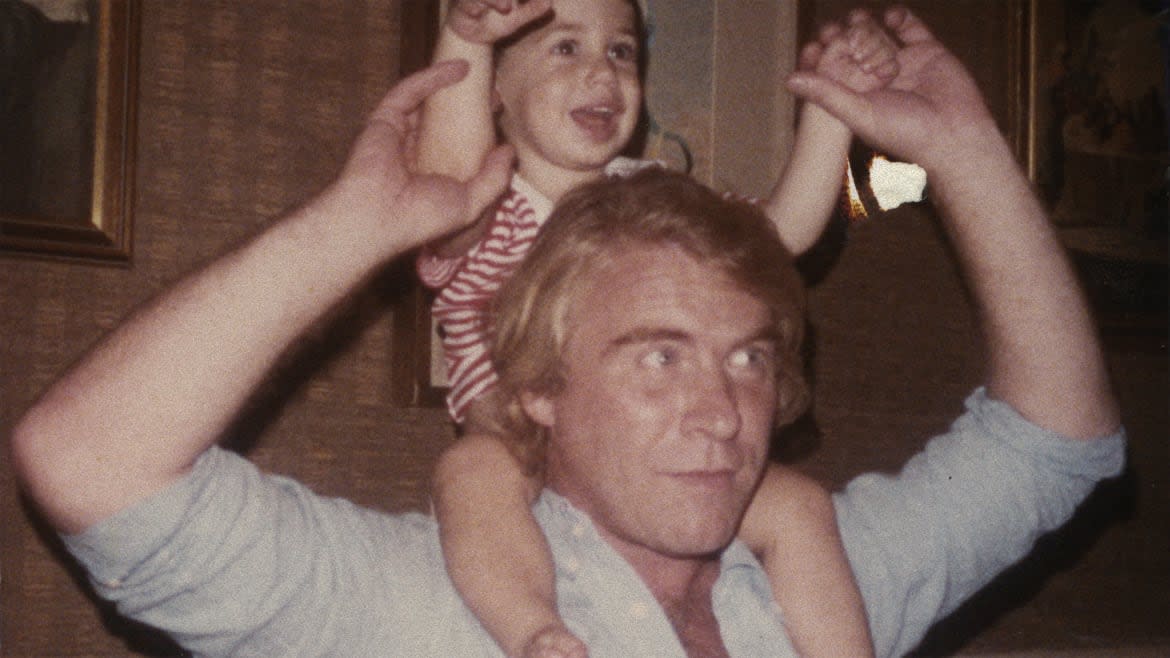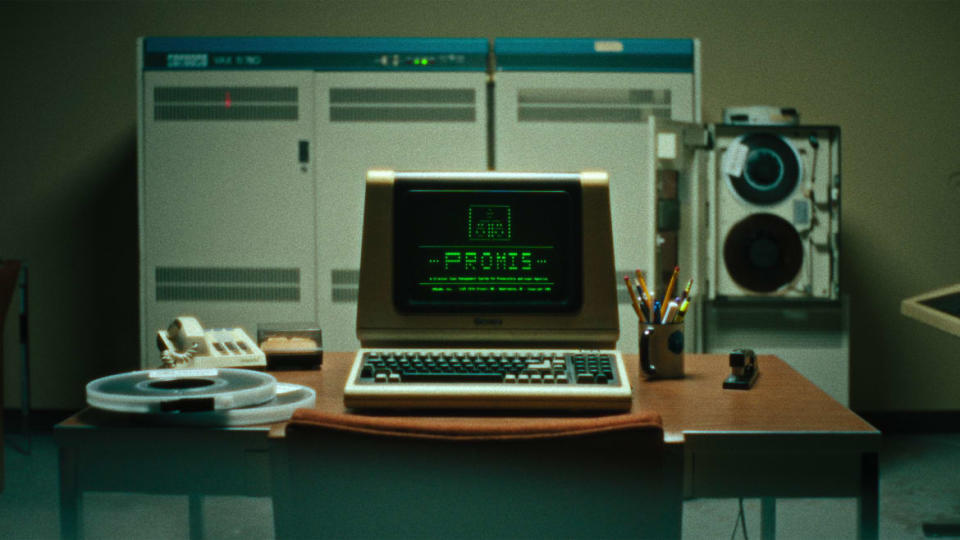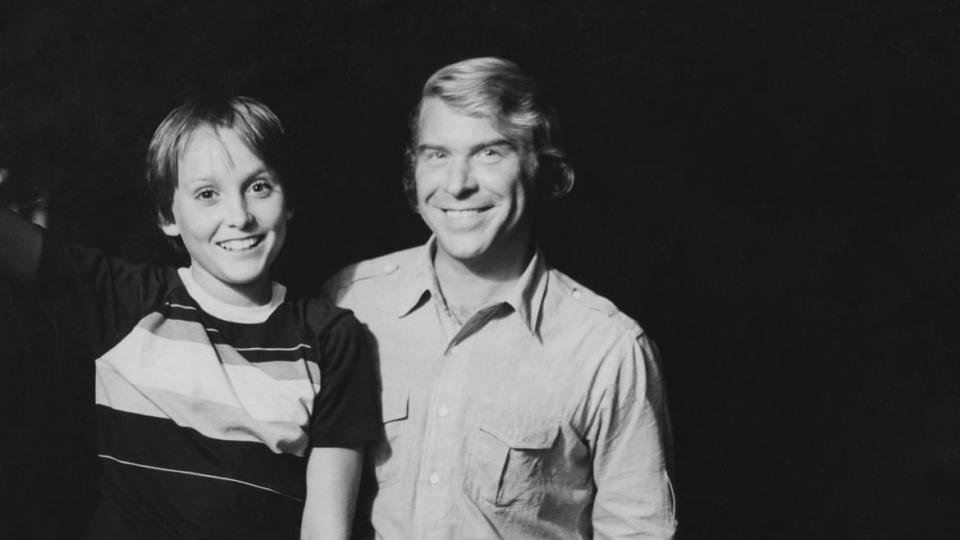He Uncovered a Rogue CIA Conspiracy. Then He Was Found Dead.

- Oops!Something went wrong.Please try again later.
- Oops!Something went wrong.Please try again later.
- Oops!Something went wrong.Please try again later.
Conspiracy theories are dangerous in more ways than one, and American Conspiracy: The Octopus Murders is—among many, many things—an exposé about the irrevocable damage that can come from falling down the rabbit hole. Produced by Mark and Jay Duplass (Wild Wild Country), Netflix’s four-part true-crime docuseries is an investigation into what its primary subject believed was “the political conspiracy of the century.” Yet the further it proceeds down its hopelessly winding path, the more it becomes a portrait of the hazards posed by such sleuthing and thinking. Enticing viewers with the promise of world-shattering secrets and then miring them in a thicket of debatable facts, dubious conjecture, and manic fantasy, it’s an expert case of true-crime form echoing its content.
Designed to make one’s head spin until it hurts, American Conspiracy: The Octopus Murders (Feb. 28) is the tale of Danny Casolaro, a writer who was found dead in a Sheraton hotel bathtub on Aug. 10, 1991, in Martinsburg, West Virginia. Police swiftly dubbed this a suicide, since Casolaro had been alone, his wrists had been cut, and he’d left a farewell note. Those closest to the outgoing and loving man, however, thought otherwise. For one, Casolaro’s wrists had 12 separate slash wounds that were so deep, they’d severed the tendons. Moreover, there was blood all over the room, in places that made no sense if he’d simply been ending his life. Most suspicious of all, though, was the fact that just a few short weeks before his demise, Casolaro had told his brother Tony that if something happened to him, it wouldn’t be an accident.
Casolaro’s death, and the theory that he’d been murdered, soon became local news, since he hadn’t been any old scribe. By 1991, Casolaro was knee-deep into reporting on a supposedly bombshell story about a multi-tentacled conspiracy that he referred to as “the Octopus” which involved software engineers, businessmen, drug dealers, gunrunners, organized crime, the CIA, FBI, NSA, and various individuals related to the Ronald Reagan White House. Casolaro had stumbled upon this while employed by Computer Age, a newsletter about the computer business, and it all began with INSLAW, a firm founded by Bill Hamilton that had created a revolutionary nationwide criminal-case tracking system for law enforcement agencies known as PROMIS. In the second year of a three-year contract, the Department of Justice abruptly stopped paying INSLAW for PROMIS, forcing the firm into bankruptcy. Heated lawsuits and telephone threats to Hamilton ensued, all of which were so over-the-top that it made Hamilton and those aligned with him (including former Attorney General Elliot Richardson) suspect that the DOJ was up to something “much dirtier than Watergate.”
This was the initial spark that ignited Casolaro’s curiosity, propelling him on a quest to understand why the DOJ had so fanatically and treacherously coveted PROMIS. What he believed he uncovered was a web of interrelated offenses that suggested a clandestine world of spies, wheeler-dealers, and psychos determined to wield power in the shadows. Casolaro eventually planned to write a book about all of this, only to perish before anything came to fruition. With his friends and relatives grief-stricken over his loss, it seemed to be the end of Casolaro’s saga. Yet, in an unlikely twist, someone else chose to step in and assume his mission—thus begetting this docuseries.

That person was Christian Hansen, who 10 years ago became fascinated by Casolaro’s death and, with it, the conspiracy he’d allegedly unearthed. Despite being unnerved by his buddy’s obsessive interest in Casolaro, American Conspiracy: The Octopus Murders director Zachary Treitz soon joined in Hansen’s pursuit of the truth, documenting him as he plunged headfirst into the deceased journalist’s myriad hypotheses. Poring over his handwritten notes, speaking to his many furtive contacts, and putting together the final pieces of the puzzle that he’d laid out for the world to hopefully see, Hansen was something like Casolaro reincarnated—and as Casolaro’s longtime friend Ann Klenk remarks, the fact that the two men resembled each other made this development downright strange.
She Suspected Her Step-Grandfather Was the Zodiac Killer
What Hansen and Treitz detail in American Conspiracy: The Octopus Murders is too sprawling and convoluted to properly explicate here. Nonetheless, it concerns a tangled network of operatives—led by tech-whiz Michael Riconosciuto, globe-trotting John Philip Nichols, potential spook Robert Booth Nichols, and possible serial killer Philip Arthur Thompson—who were connected to various government agencies. Their connections also extend to the Cabazon reservation in Indio, California, where casinos and other businesses ostensibly made money to fund covert intelligence-agency ventures (like Iran-Contra) carried out behind the back of Congress and the American public. These men apparently did all sorts of nefarious things, including assassinate (or order the executions of) those who stood in their way—hence the “murders” in this series’ title—and they also fueled Casolaro’s snooping, giving him tips and leads that soon consumed his days and nights. They ultimately drove him to Martinsburg, West Virginia, in 1991 and, by extension, got him killed. Although as Hansen himself comes to understand, the precise nature of what took place in that Sheraton is, like everything else about this tale, hard to decisively pin down.

Danny Casolaro in American Conspiracy: The Octopus Murders.
American Conspiracy: The Octopus Murders is an initially exhilarating descent into conspiracy-addled speculation about the clandestine levers that are pulled (and the folks who pull them) in order to keep the world working. The further it plummets, however, the more it (and Hansen) becomes ensnared in a morass of ideas, evidence, and hearsay whose connections to each other, or the bigger picture, are impossible to properly delineate. As such, Treitz’s docuseries becomes a reflection of its own narrative, revealing the heart-racing allure of searching for answers to tantalizing questions about the grand design governing modern existence, as well as the fundamental folly of thinking that those bombshell revelations exist in some unified form or, even if they do, that they’re attainable. What Hansen and Treitz learn, at least to some extent, is not dissimilar from what Casolaro discovered: namely, that conspiracies are most tempting when they’re comprised of both truths and lies, and that embracing them too heartily is a surefire way to permanently warp your psyche—if not end your life.
Get the Daily Beast's biggest scoops and scandals delivered right to your inbox. Sign up now.
Stay informed and gain unlimited access to the Daily Beast's unmatched reporting. Subscribe now.

